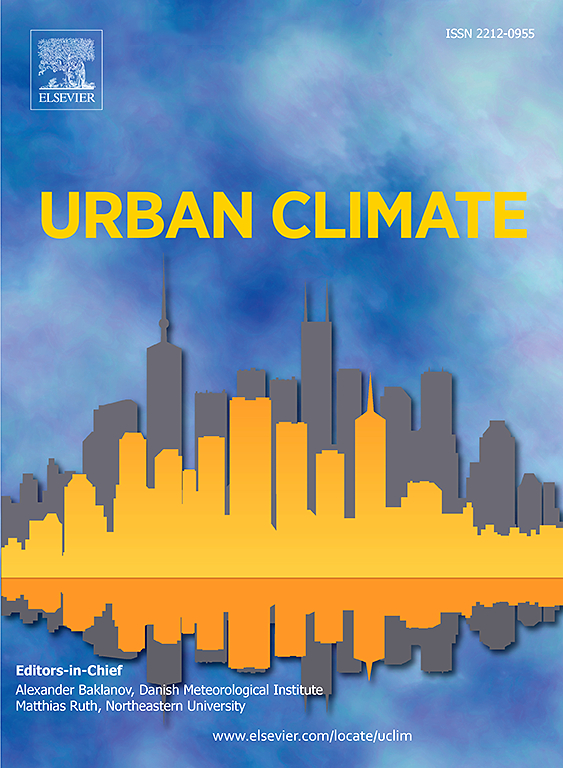Parameterizing urban canopy radiation transfer using three-dimensional urban morphological parameters
IF 6
2区 工程技术
Q1 ENVIRONMENTAL SCIENCES
引用次数: 0
Abstract
The radiative schemes in urban canopy models are typically based on the two-dimensional street canyon model, which cannot fully capture the three-dimensional geometries in East Asia cities. This study addresses this limitation by parameterizing radiative flux by three-dimensional urban morphology parameters: frontal area density (λf) and plan area density (λp). The parameterization is supported by simulation results from the newly developed building-resolving radiative model (PyUray), which utilizes the Monte Carlo ray tracing method to achieve high accuracy and leverages GPU processing to accelerate simulation. The PyUray model is fully validated by comparing the urban canyon albedo with field measurements from the SOMUCH project. To support the parameterization, the solar gain and longwave radiative heat loss at ground surfaces and urban canyon surfaces are evaluated at various λf (0.16 ≤ λf ≤ 2.49) and λf (0.16 ≤ λp ≤ 0.83) using PyUray. With regression models, this study formulates functions to estimate the radiative flux of urban surfaces using three-dimensional morphological parameters λf and λp, along with the three-dimensional solar direction. The simulation indicates that λf and λp have different impacts on the net radiative absorption of the urban canopy layer, with ground and street canyon surfaces exhibiting different responses to these morphological parameters.
利用三维城市形态参数为城市冠层辐射传输设置参数
东亚城市冠层模型的辐射方案通常基于二维街道峡谷模型,不能完全捕捉城市的三维几何形状。本研究通过三维城市形态参数:正面面积密度(λf)和平面面积密度(λp)来参数化辐射通量,从而解决了这一限制。新开发的建筑物分辨辐射模型(PyUray)的仿真结果支持参数化,该模型利用蒙特卡罗射线追踪方法实现高精度,并利用GPU处理加速仿真。通过将城市峡谷反照率与SOMUCH项目的野外测量结果进行比较,PyUray模型得到了充分验证。为了支持参数化,利用PyUray计算了不同λf(0.16≤λf≤2.49)和λf(0.16≤λp≤0.83)条件下地表和城市峡谷地表的太阳增益和长波辐射热损失。利用回归模型,利用三维形态参数λf和λp,结合三维太阳方向,构建估算城市地表辐射通量的函数。模拟结果表明,λf和λp对城市冠层的净辐射吸收有不同的影响,地表和街道峡谷表面对这些形态参数的响应不同。
本文章由计算机程序翻译,如有差异,请以英文原文为准。
求助全文
约1分钟内获得全文
求助全文
来源期刊

Urban Climate
Social Sciences-Urban Studies
CiteScore
9.70
自引率
9.40%
发文量
286
期刊介绍:
Urban Climate serves the scientific and decision making communities with the publication of research on theory, science and applications relevant to understanding urban climatic conditions and change in relation to their geography and to demographic, socioeconomic, institutional, technological and environmental dynamics and global change. Targeted towards both disciplinary and interdisciplinary audiences, this journal publishes original research papers, comprehensive review articles, book reviews, and short communications on topics including, but not limited to, the following:
Urban meteorology and climate[...]
Urban environmental pollution[...]
Adaptation to global change[...]
Urban economic and social issues[...]
Research Approaches[...]
 求助内容:
求助内容: 应助结果提醒方式:
应助结果提醒方式:


